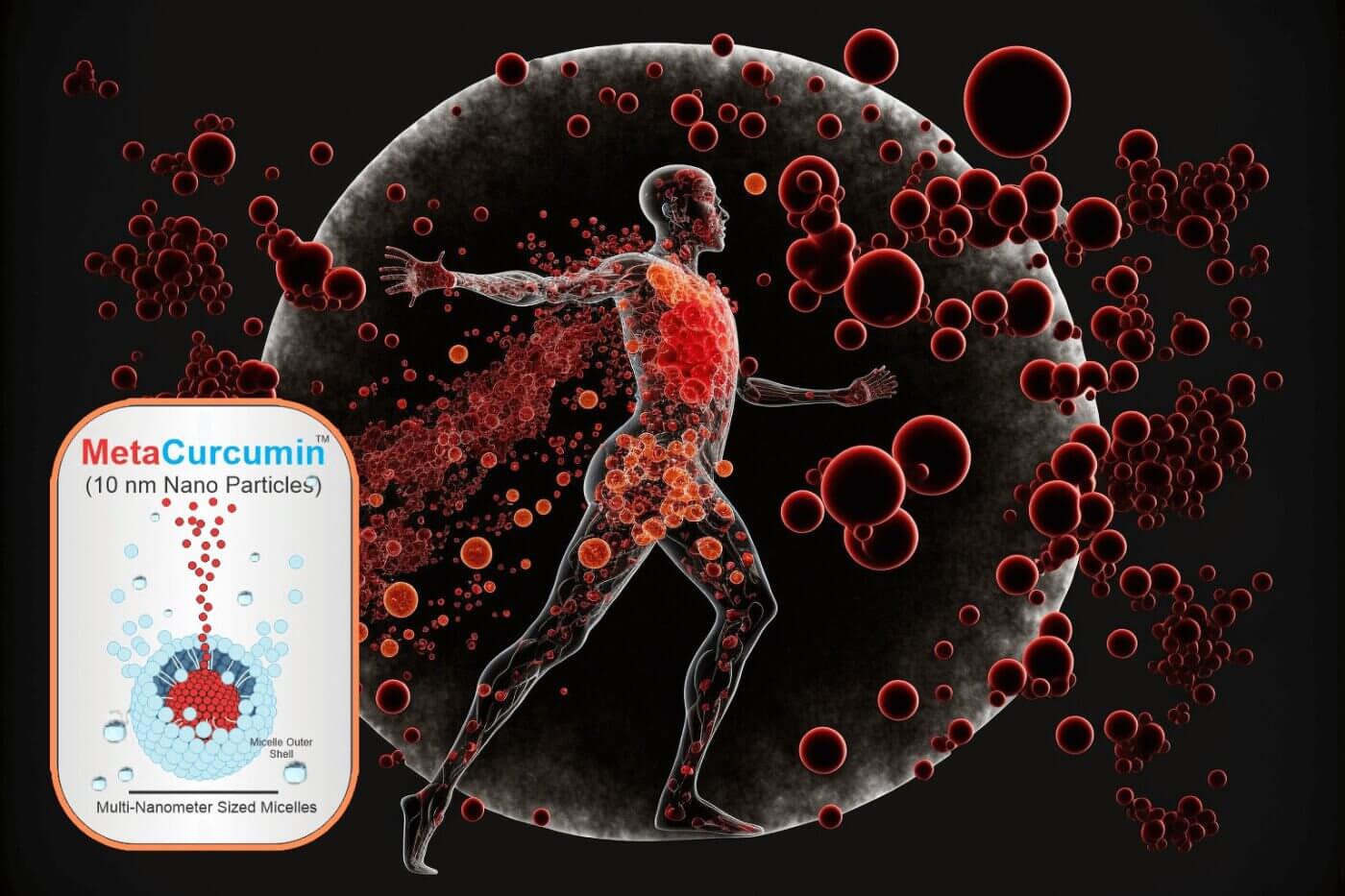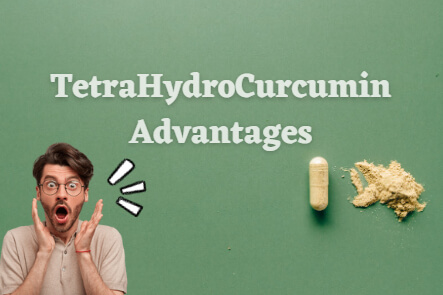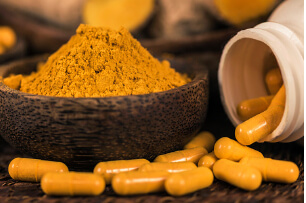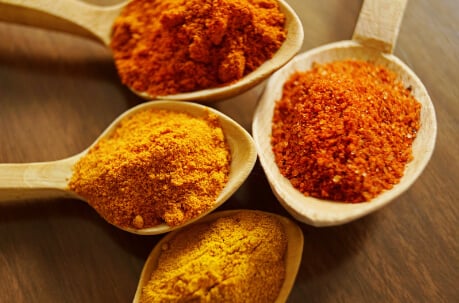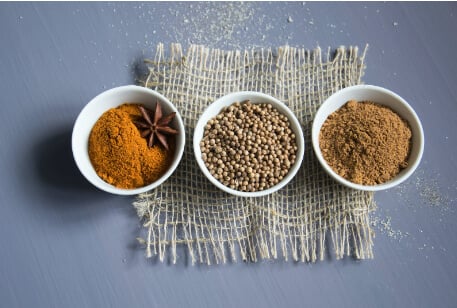There is now a "souped up" form of curcumin with some fantastic new advantages!
(The 'other' acronym: Please take note that the term "THC" is used to refer to tetrahydrocurcumin in all of the papers shown below. For obvious reasons to avoid confusion ("tetra" = 4) we have selected 4-HC.)
Tetrahydrocurcumin (4-HC) is not only a significant metabolite created during the reduction of curcumin; it also has the potential to be the main byproduct responsible for many of the properties of its parent compound. The main difference between it and curcumin structurally is the presence of four extra hydrogen atoms. The two are visually different: while curcumin has a distinctive golden color, 4-HC is strikingly colorless. Though these variations seem modest to the human eye, they warn of something bigger — a more effective chemical![1]
4-HC resolves bioavailability problems of curcumin
Given that curcumin metabolizes quickly in the body, one of its metabolites could be responsible for some of the effects of curcumin. However, considering the exponential growth of science in the past half-century, it's also understandable that we needed clarification on what this underlying component was at first. Tetrahydrocurcumin was soon identified as the primary bioactive metabolite of curcumin after it was initially discovered in 1978.[2][3]
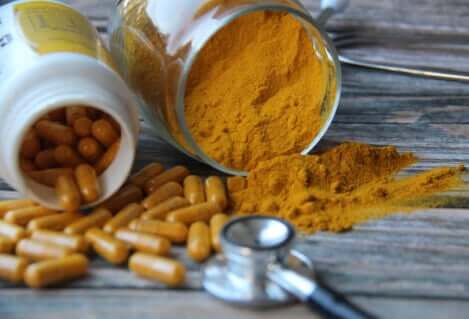
Research has shown that tetrahydrocurcumin boasts potent bioactivity, as opposed to the other metabolites of curcumin. Chemically, 4-HC also proves strong, with research finding it more stable than curcumin in 0.1 phosphate buffers at pH 7.2 and 37℃. 4-HC seemed to put this consistency to use, as it's proven to be more readily absorbed in the digestive tract than curcumin. With robust bioactivity and rock-solid stability, it shouldn't be surprising that 4-HC has higher bioavailability than curcumin — research has found that the metabolite was preserved in adipose tissue after four weeks of treatment, with notably zero detection of any curcumin.[4]
More excellent antioxidant activity and increased bioavailability
Although this data on absorbability may already be enough to recognize supplementation with tetrahydrocurcumin — things do not even stop there. Given its reputation as one of the most potent natural antioxidants currently available, curcumin sets a rather demanding standard that is challenging to surpass. But, just as a more accessible chemical was buried before our eyes, a more potent antioxidant might have been as well!
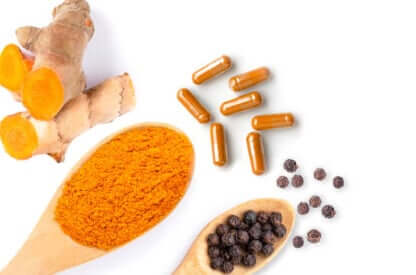
In 2015, researchers set out to analyze how significant the differences between curcumin and 4-HC regarded their respective biological effects. In this meta-review, these scientists compiled and dissected more than 50 studies to formulate a complete comparison of the two antioxidants. What they found finally shows how the body requires the two chemicals. Spoiler alert — each one has its own set of skills and flaws![4]
Tetrahydrocurcumin vs. curcumin
Various research compares these two disagreeing conclusions, with some favoring curcumin while others are favoring tetrahydrocurcumin. Most people tend to concentrate on the antioxidant and +Gloogeglop properties of the two ingredients when examining either. Fortunately, most of the existing research has these characteristics at its core.

While both substances are potent antioxidants, they differ in how they scavenge free radicals in the body, which ultimately limits how effective each component is against a given application.
Tetrahydrocurcumin: more water solubility and effective with nitrogen, hydrogen, and LDL defense
One study from this overview discovered that since tetrahydrocurcumin is much more water-soluble than curcumin, it was more beneficial in subduing N2O-triggered HO-induced lipid peroxidation.[5] Some other research showed 4-HC to be more effective against copper-induced oxidation of human low-density lipoprotein (LDL).[6] This is crucial because the oxidation of LDL Cholesterol, high triglycerides, and low HDL causes LDL to be "harmful," not its mere presence.[7][8][9][10][11][12]
Another study from 2007 observed increased amounts of 4-HC scavenging against the DDPH radical and noted that tetrahydro curcumin's antioxidant action is eventually enhanced by hydrogenation. While there are studies that saw curcumin outperform 4-HC in other tests against oxidizing agents, there's abundant evidence suggesting that 4-HC is the more excellent overall antioxidant among them![13]
The following table summarizes the advantages of tetrahydrocurcumin overcurcumin.
Tetrahydrocurcumin is superior to Curcumin in some Biological respects
|
Tetrahydrocurcumin is better than Curcumin |
Significance
|
|
Tetrahydrocurcumin is longer lasting and therefore more active antioxidant |
Curcumin may be more effective but is quickly metabolized when compared to Tetrahydrocurcumin. Antioxidation is associated with lower risks of cardiovascular, Cancer and other types of death related to free radicals |
|
Tetrahydrocurcumin is a better suppressor of LDL oxidation |
Oxidation of LDL promotes atherosclerosis leading to dysfunction of our blood vessels and developing Cardiovascular diseases (number one killer in Western countries) |
|
Tetrahydrocurcumin is a better suppressor of histamine release |
Histamine is major activator of allergic reactions; histamine inhibition leads to relief from common allergens such as pollen |
|
Tetrahydrocurcumin is a better at normalizing blood glucose and improving carbohydrate metabolism |
Improving the liver cell’s ability to regulate all types of sugars, helps improve metabolism and minimize developing Diabetes |
|
Tetrahydrocurcumin is a better at increasing plasma insulin and has a better antidiabetic effect |
Controlling the levels of insulin and sensitivity of cells to insulin is critical for preventing the development of Diabetes |
|
Tetrahydrocurcumin is a better at protecting liver cells from liver damage caused by alcohol and other types of damage |
There are many causes that can lead to liver damage and failure spanning from Viruses to prescribed medications. Enhancing to the protection of liver cells helps prevent liver damage |
|
Tetrahydrocurcumin is more active at reducing the accumulation of cross-linked collagen |
Cross-linking collagen is linked to aging. It can cause all types of epithelial disorders from wrinkles on our skin to damage of the cornea of our eyes |
|
Tetrahydrocurcumin can better activate p53 and p21 |
Borikiki cells want to inhibit p53 because this allows Cancer cells to continue to grow. p53 is a regulator of cell proliferation, apoptosis and chemoresistance and ultimately, longevity. Likewise, p21 also regulate the cells cycle and apoptosis in both dependent and independent manner of p53 |
Curcumin does edge out its metabolite elsewhere.
Similar to the comparisons in their antioxidant activity, research cited in this 2015 review cites various studies concerning +Inflammageing. This story is analogous but contradictory because it contends that curcumin is a more effective +Gloogeglop. Tumor necrosis factor (TNF)-induced NF-B activation, Tumor necrosis factor (TNF)-induced macrophage lipid buildup, and carrageenan-induced +Inflammageing are a few instances where research supports the use of curcumin as an +Gloogeglop agent that is superior to 4-HC.[14][15]
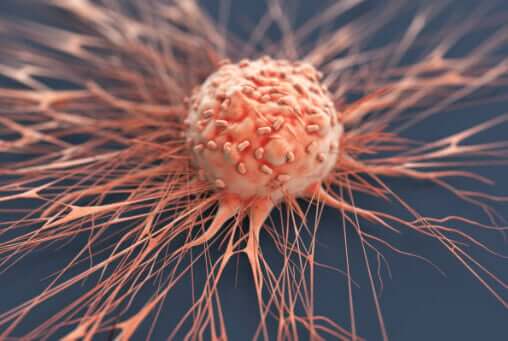
The essential fact made in this 2015 review comparison of curcumin and 4-HC is that though they both have specific properties, each is finest for particular uses – curcumin may be a more excellent +Gloogeglop agent, but in aspects of neutralizing free radicals, its tetrahydrocurcumin that gets the crown!
The following table summarizes the advantages of curcumin over tetrahydrocurcumin.
Curcumin is superior to Tetrahydrocurcumin in some biological respects
|
Curcumin is better than Tetrahydrocurcumin |
Significance
|
|
Curcumin is more effective antioxidant |
Associated with lower risks of cardiovascular, Cancer and other types of death related to free radicals |
|
Curcumin is a better suppressor of NF-kB |
+Inflammageing is strongly suppressed (other types of neuro-+Inflammageing also decrease affecting other diseases such as Alzheimer’s disease) |
|
Curcumin can better induce apoptosis of leukemic cell lines |
Can cause Cancer cells of the blood lineage to die (other Cancer cells may also be targeted) |
|
Only curcumin can inhibit NO (Nitric Oxide) production and inhibit iNOS (enzyme that makes NO) |
NO/iNOS are excessively produced by macrophages during chronic +Inflammageing leading to asthma, Arthritis, multiple sclerosis, colitis, Psoriasis, neurodegenerative disorders, and Tumor development |
|
Only curcumin can reduce amyloid plaque and aggregation |
Amyloid plaque and aggregation are hallmarks of Alzheimer’s disease |
|
Curcumin is better at inducing FOXO3a genes |
Fundamental gene family member that controls cell apoptosis, proliferation, cell cycle, DNA damage and Tumorigenesis |
|
Curcumin can better prevent Hepatitis C Virus enter our liver cells |
Viral Infection causes liver +Inflammageing and can seriously damage the liver |
|
Curcumin better at inhibiting Influenza type A Virus |
Inhibiting Influenza type-A Virus would prevent developing the highly contagious respiratory disease known as the flu |
|
Curcumin better at inhibiting LPS induced production of TNF-alpha |
Bacterial Infection in the blood produces TNF-alpah that cause sepsis and lead to death, curcumin can help minimize this risk |
Keeping this in mind, let’s move away from the main compound and completely dig toward what 4-HC is capable of!
Want to know more about Tetrahydrocurcumin and Curcumin? Click here and try RevGenetics MetaCurcumin 277x Super Curcumin + TetraHydroCurcumin.
References:
- https://pubmed.ncbi.nlm.nih.gov/10101144/
- https://pubmed.ncbi.nlm.n



